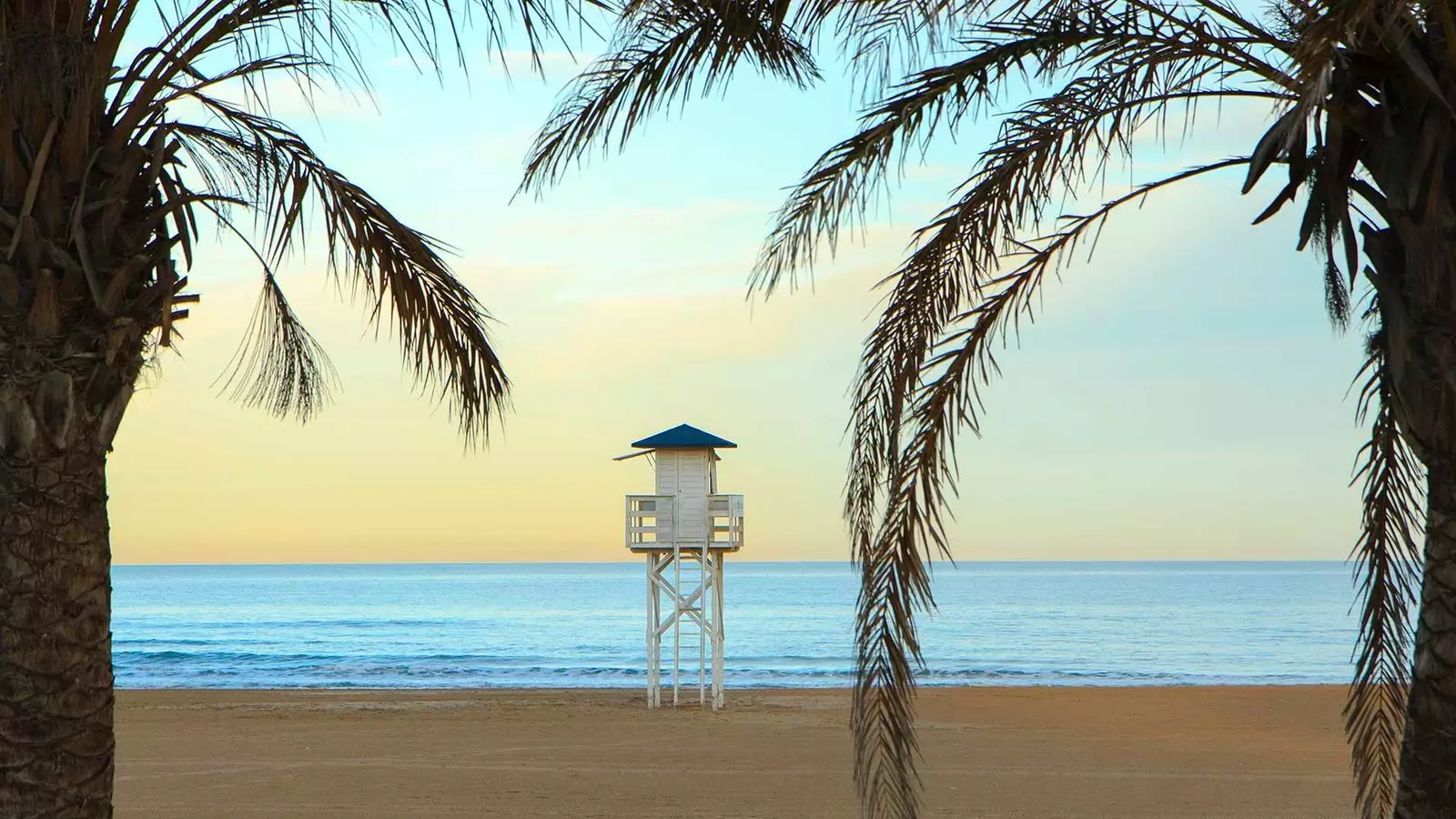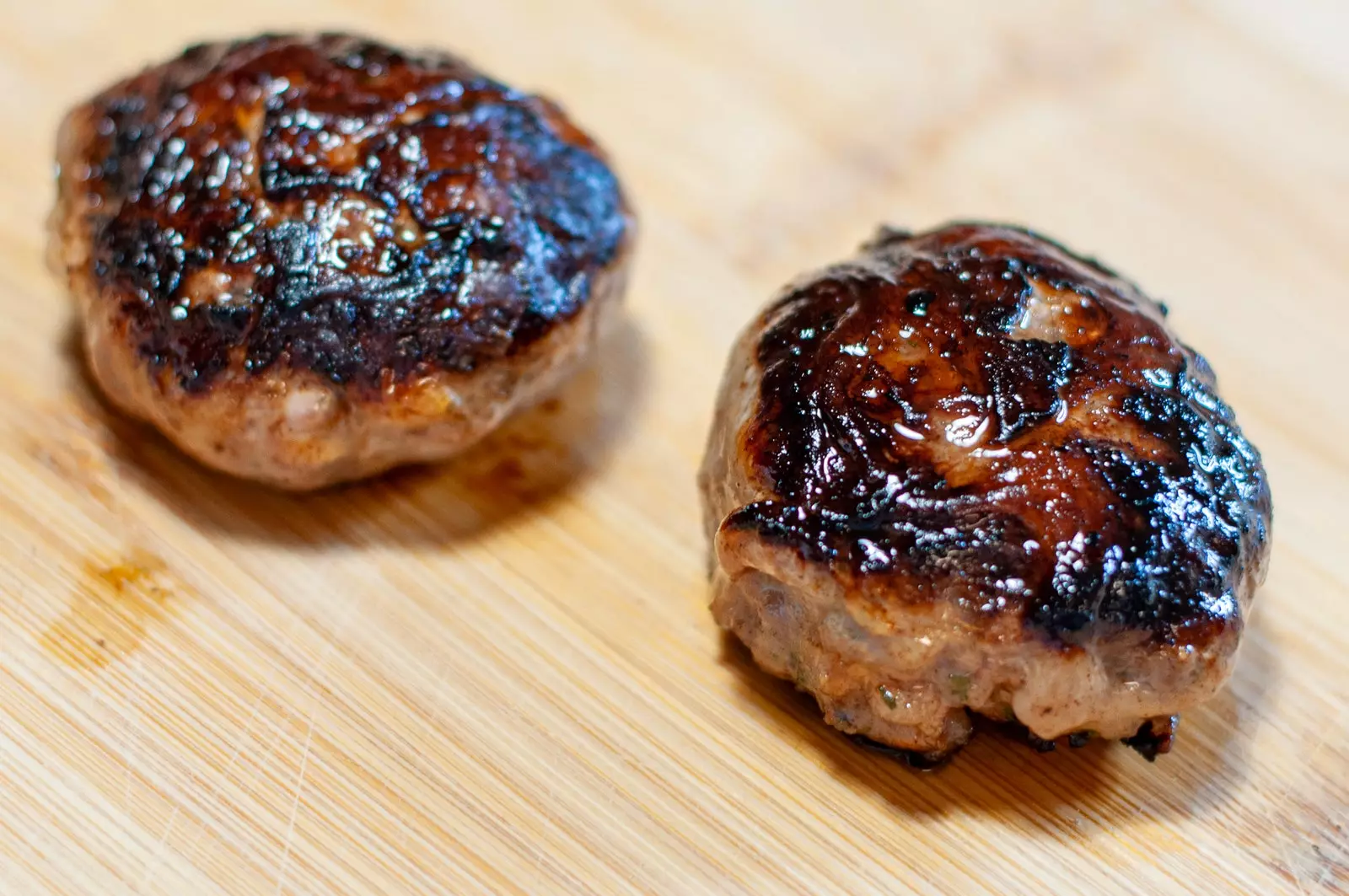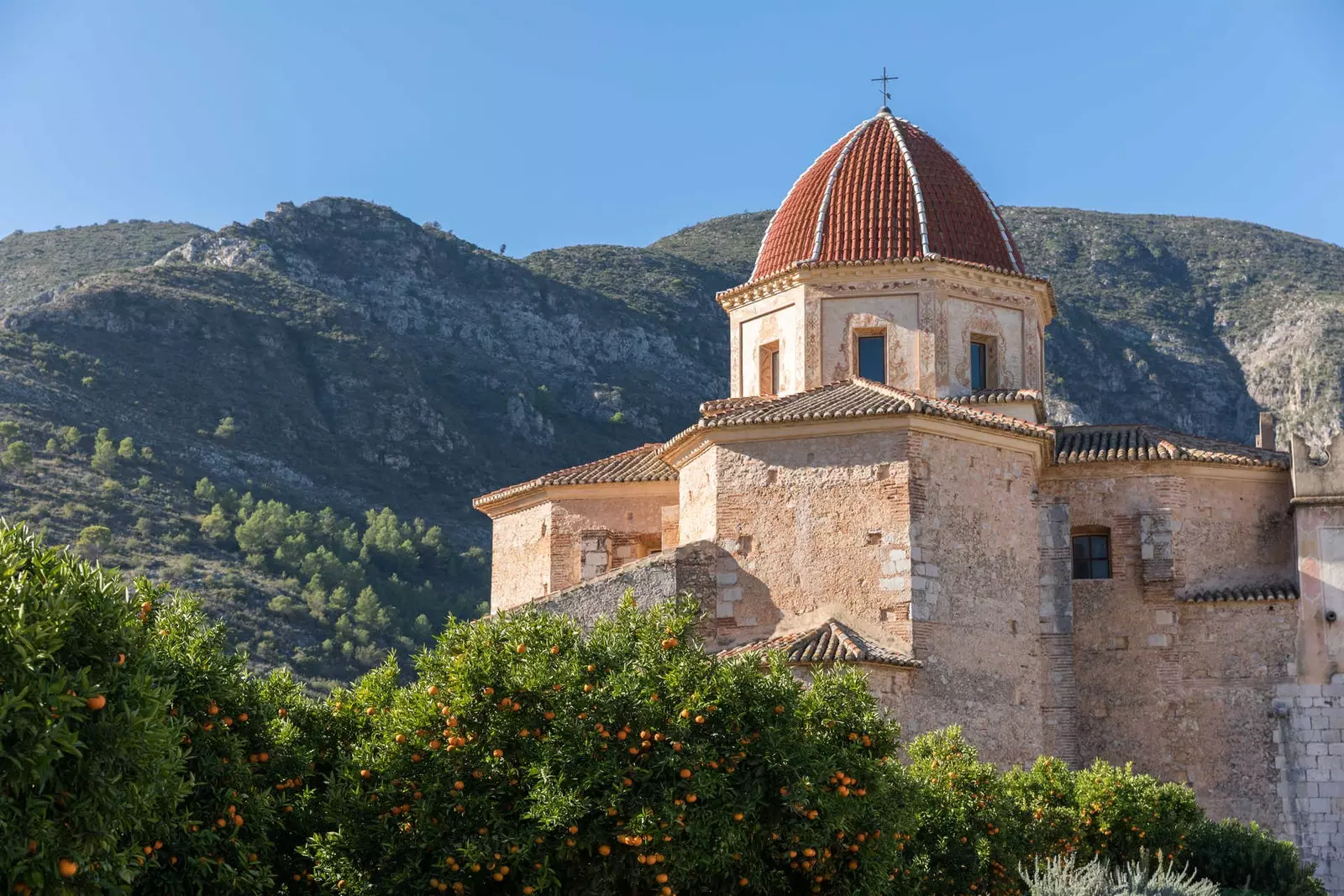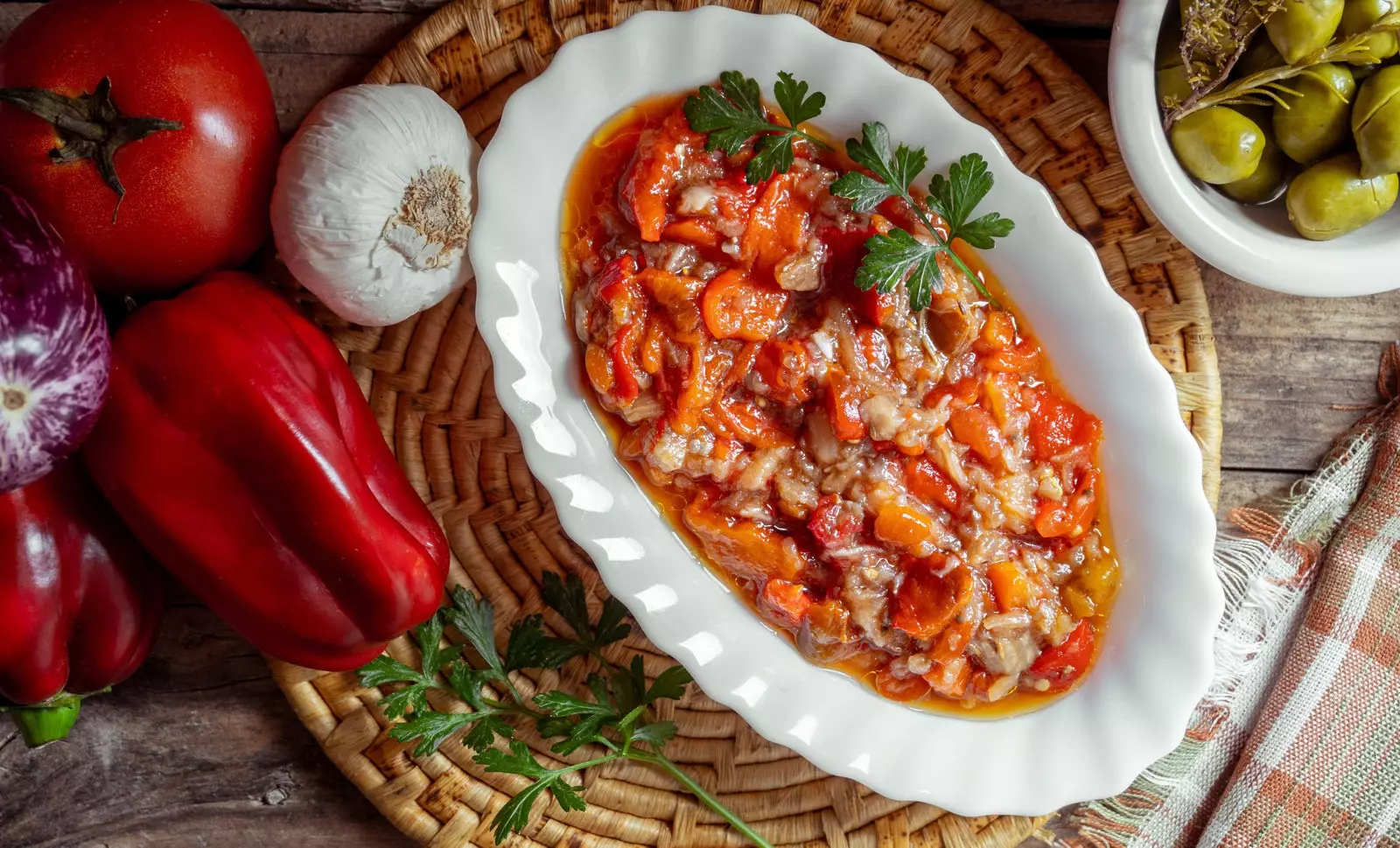If we asked an outsider about the three main characteristics that define Gandia or its surroundings, surely the first thing that would come to mind would be beaches , then would come the abundant citrus production and finally the headquarters of the Borgias (this only for experts in the pontifical court or in truculent offspring). But if the alleged survey asked for four identifying milestones instead of three, immediately after the interviewee would mention the fideuà.

Sunset in Gandia, Valencia.
EATING IN GANDÍA: FIDEUÀ, THE QUEEN OF ITS GASTRONOMY
Sister (or cousin, it doesn't matter) of paella, the fideuà has exact coordinates on its origin ; not like the other one, that she loses them under a pile of years. In addition, it has a history that supports her birth, or so the Gastronomic Association of Fideuà de Gandía –The highest authority on the matter to date: the twenties of the last century and aboard the Santa Isabel “trawl” boat, a group of sailors they put into practice that helpful saying about the lack of resources and the sharpness of ingenuity.
On the high seas from dawn to mid-afternoon, when they returned to port to sell the fresh fish in the fish market, the sailors had to eat on board every day and in those they were when they were going to prepare a seafood paella, but oh, surprise!: there was no rice in the pantry.
for lack of bread (or rice), they are good hard pasta noodles ; And just like that, the most famous dish of the Safor began to walk. The Association is also in charge of ensuring the good work of the recipe, that ingredients and proportions are maintained is essential so that the plate does not mutate in endless possibilities.
That's why, to make a real Fideua Norway lobsters, monkfish cut into pieces and prawns are required (at a rate of 600grs for lobsters and monkfish and 250grs for prawns). Noodle, obviously, (600grs also, and number four) and two very finely chopped garlic cloves (for the sauce). In addition, you need a chopped tomato (200 grams), a teaspoon of paprika, a grated onion and a pinch of saffron. The secret, of course no one will tell, lies in the two liters of fish broth needed for cooking.
The Gastronomic Association organizes an annual contest to award the prize for the best fideuà, so there are so many dishes to taste as well as awards and editions. Within the good, choosing the exquisite is a personal matter.
THE TREASURES OF THE VALLEY: FROM FIGATELL TO COCA DE MESTALL
But the Safor hides a small valley to the north, the Valldigna: a land as beautiful as a champion of the best gastronomy in the area, because here they are born (or at least they are made) the best figatells . Namely: the figatell is a sausage based on lean meat, liver and some bacon; Of course (again) the secret lies in the details and in the proportions… and the difference.

Figatell, Valencian sausage.
In front of a counter that gives glory to see, the butcher Olegario Alario Peig, of Simat of the Valldigna, explains us the modus operandi: “a mixture of the three main ingredients is worked, seasoned with parsley and then the grace touches: some people add a pinch of cloves, others a little salt, some pine nuts; we give our special touch and unique color with red pepper” –says the fourth generation at the head of butcher shop Olegario, a place of pilgrimage for devotees of this excellent bite.
"When the mixture is compact and uniform you take a piece to wrap it in the randa (part of the peritoneum mesentery) and crush it to give a circular shape; but smooth, not spherical” –says mr. Alario. The best pass through his hands figatells of the Safor , handmade and delicious, long life to your hands!

Royal Monastery of Santa María de la Valldigna, in Simat de la Valldigna, Valencia.
And without leaving the Valldigna -now in taverns – we discovered another culinary treasure: them mestall cokes . Again the need to get out of trouble hit a unexpected recipe , because it is said that it was the lack of wheat flour that forced them to mix them and look where the invention was richer than expected.
At the rate of two equal parts, the wheat flour and the corn flour are kneaded together, giving them a circular shape approximately the width of a span of a hand. and then the magic begins : botifarra of rice, white sausage, bacon, chorizo or sardine (if you prefer salty) are spread throughout the spongy dough, as if it were an ottoman.
Twenty minutes in the oven and ready ; yes, it is advisable not to let it rest because with the cold the flour hardens and the bite becomes coarse, so it is better to sink your teeth to the point of cooking, with the softness and lively taste.

Espencat, typical dish of the area, Valencia.
A SUI GENERIS SUMMER SALAD
when the heat presses (but really press, no "feints" in the thermometer) not everything goes in the kitchen; or at least, not everything goes to be able to survive digestion. A salad bar plate is craving the winning option . Of course, with more consistency and ignoring the everlasting lettuce.
It is the espencat, another recipe that you can eat in Gandía, with its epicenter in La Safor but with a fame that spreads throughout the surrounding area as the stain of the oil that is needed in its elaboration. Essential red peppers and aubergines, large and meaty to go straight into the oven; then peeled and cut into strips stir as a base for the salad. Add the salted cod loin, torn into portions, and sprinkle everything with an abundant stream of olive oil, so that it binds flavors.
There will be –according to the area and the master's “library”– who will season it with hard-boiled eggs and even who will sprinkle it with a fine rain of lemon zest. Whatever the final detail, the truth is that it is everything a (summer) festival for the taste buds.
This gastronomic epilogue is valid for any of the four dishes: once tasted, just by mentioning them you start to salivate.
